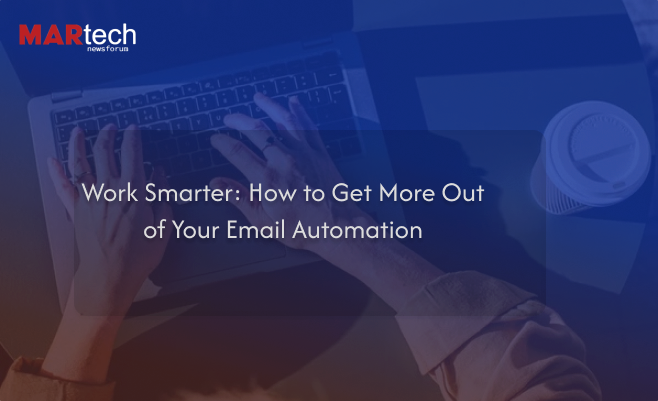
Email automation is no longer a “nice to have”—it’s a core pillar of modern marketing operations. But while many businesses have implemented automated email workflows, few are fully maximizing their potential. Too often, automation ends up as a set-it-and-forget-it system, leading to missed opportunities, stale messaging, and underwhelming results.
The goal of email automation isn’t just efficiency—it’s relevance, timeliness, and impact at scale. In this post, we’ll explore how to work smarter with your automation setup so you can drive more engagement, more conversions, and better long-term customer relationships.
1. Start with Strategy, Not Just Triggers
Most marketers build workflows around events: a welcome email after signup, a discount after cart abandonment, a reminder when a product is back in stock.
These are useful—but they’re reactive.
To get more out of your automation, start with a strategy-driven framework:
- What stages do customers go through in your funnel?
- Where are the moments of highest intent?
- Where do drop-offs typically happen?
- How can content support customer education and decision-making at each stage?
Use this thinking to map customer journeys, then build automation that guides, not just reacts.
2. Segment More Intelligently
Automation without segmentation is just mass emailing on a timer. To truly personalize, go beyond basic demographics.
Consider:
- Behavioral data: pages visited, content consumed, past purchases
- Engagement history: opens, clicks, conversion activity
- Customer lifecycle stage: new subscriber, repeat buyer, at-risk user
- Product interests: categories browsed, wishlisted, or carted
By tailoring your automation based on who the user is and what they’ve done, you’ll increase relevance—and with it, engagement.
3. Build Dynamic Content Blocks
If you’re sending similar emails to multiple segments, don’t duplicate workflows. Instead, use dynamic content that changes based on user data.
Examples:
- Adjust messaging for B2B vs. B2C audiences
- Show different product recommendations based on browsing behavior
- Localize content by region or language
- Use loyalty status or purchase history to trigger exclusive offers
Smart use of dynamic content reduces workload and increases impact—a clear way to work smarter.
4. Test, Optimize, Repeat
Email automation isn’t “done” once it’s live. It’s an ongoing cycle of testing and improvement.
Areas to test include:
- Subject lines and preview text
- Send times and frequency
- CTA wording and button placement
- Email length and layout
- Personalization variables (first name, location, etc.)
- Image use vs. plain text
Don’t just A/B test campaigns—test automation workflows. See which paths convert better, which emails cause drop-off, and which sequences drive the most engagement.
5. Connect Automation to Broader Martech Stack
Automation shouldn’t live in a silo. Integrate your email platform with your CRM, ecommerce system, website analytics, and ad tools so data flows freely.
Benefits include:
- Triggering emails based on real-time product or customer data
- Aligning email content with user behavior across other channels
- Retargeting users who open but don’t click
- Measuring cross-channel attribution and ROI
The smarter your integrations, the more precise and personalized your automation becomes.
6. Use Analytics to Spot Weak Links
It’s easy to focus on open and click rates—but smart marketers go deeper.
Track:
- Workflow conversion rates: How many people complete the intended action?
- Drop-off points: Where do users stop engaging?
- Time to conversion: How long does it take from first email to purchase?
- Revenue per email: Which workflows drive the most value?
These insights help you identify what to fix, improve, or scale.
7. Don’t Forget the Human Element
Automation is efficient—but the best results come when it feels human.
To keep that connection:
- Write conversationally, not like a robot
- Share helpful content, not just promotions
- Include your brand’s tone and personality
- Give customers a way to reply—and actually respond
The smartest automation builds trust, not just transactions.
8. Keep It Clean and Compliant
Over time, automation lists can become cluttered with inactive users, outdated segments, and errors.
Work smart by:
- Regularly cleaning your lists
- Suppressing disengaged users to protect deliverability
- Updating content to stay relevant
- Reviewing workflows quarterly for broken links, typos, or logic issues
- Staying compliant with GDPR, CAN-SPAM, and other privacy regulations
Healthy lists and systems drive better results with less effort.
Conclusion: Smarter Automation Is Better Automation
Email automation is powerful, but only when used with intention. Working smarter means building with strategy, integrating data, personalizing effectively, testing continuously, and always thinking about the customer journey.
When done right, automation isn’t just efficient—it’s a revenue engine.
Take a look at your current setup. Is it helping you grow, or just sending emails?
It might be time to rethink, rebuild, and work smarter.